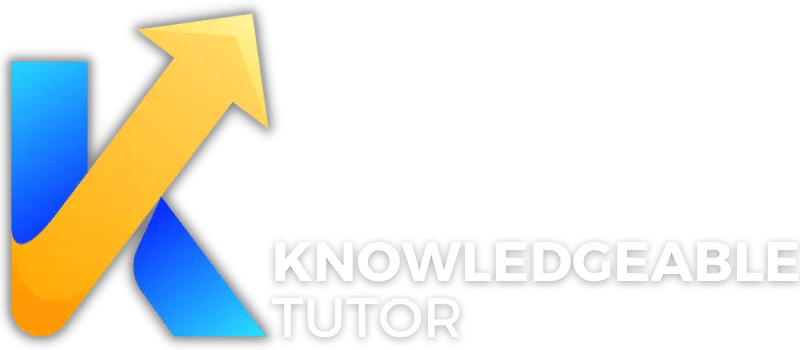Blockchain Technology In Education And Tutoring

Fanie Naude
CEO & Founder of Knowledgeable Tutor, Buznet Direct, YMC & Naude Consulting

Fanie Naude
CEO & Founder of Knowledgeable Tutor, Buznet Direct, YMC & Naude Consulting

1. Introduction
Brief Overview of Blockchain Technology
Blockchain technology is revolutionizing various industries, and the educational sector is no exception. This digital ledger technology offers a secure and transparent way to record transactions, manage data, and facilitate collaboration. As we move towards a more digitalized world, the importance of incorporating blockchain into educational systems cannot be overstated.
Importance of Blockchain in the Modern Educational Landscape
The modern educational landscape is fraught with challenges such as data security, transparency, and administrative inefficiency. Blockchain technology offers a robust solution to these issues, enhancing the quality of education and streamlining administrative processes. As the famous quote by Nelson Mandela goes, "Education is the most powerful weapon which you can use to change the world." Blockchain could very well be the tool that amplifies this change.

2. What is Blockchain?
Definition and Basic Mechanics
Blockchain is a shared, immutable ledger that facilitates the process of recording transactions and tracking assets in a business network (IBM). In simpler terms, it's a chain of blocks (data sets) that are linked and secured using cryptographic hashes. Each block contains a list of transactions, and once added to the chain, the data is nearly impossible to alter.
How It Differs from Traditional Databases
Traditional databases are centralized, meaning they are controlled by a single entity. In contrast, blockchain is decentralized and distributed across a network of computers. This decentralization ensures that no single entity has control over the entire blockchain, thereby enhancing security and transparency.
Key Differences Between Traditional Databases and Blockchain
| Feature | Traditional Database | Blockchain |
|---|---|---|
| Control | Centralized | Decentralized |
| Security | Moderate | High |
| Transparency | Limited | High |
| Alterability | Possible | Nearly Impossible |
This decentralization is not just a technical feature but a philosophical shift. It aligns with the words of Jean-Jacques Rousseau, who said, "Man is born free, and everywhere he is in chains." In the context of data management, blockchain offers a form of 'freedom' by breaking the 'chains' of centralized control.
The Role of Blockchain in Education
Blockchain's decentralized nature makes it an ideal choice for educational settings. It can manage academic records, facilitate teacher-student collaboration, and even handle administrative tasks. For instance, blockchain can be used to verify the authenticity of academic credentials, reducing fraud and enhancing the integrity of educational qualifications.
By understanding the core mechanics of blockchain, educators and tutors can better appreciate its potential impact on their profession. This sets the stage for a deeper exploration into the specific applications, benefits, and challenges of using blockchain in education, which we will delve into in the subsequent sections of this article.
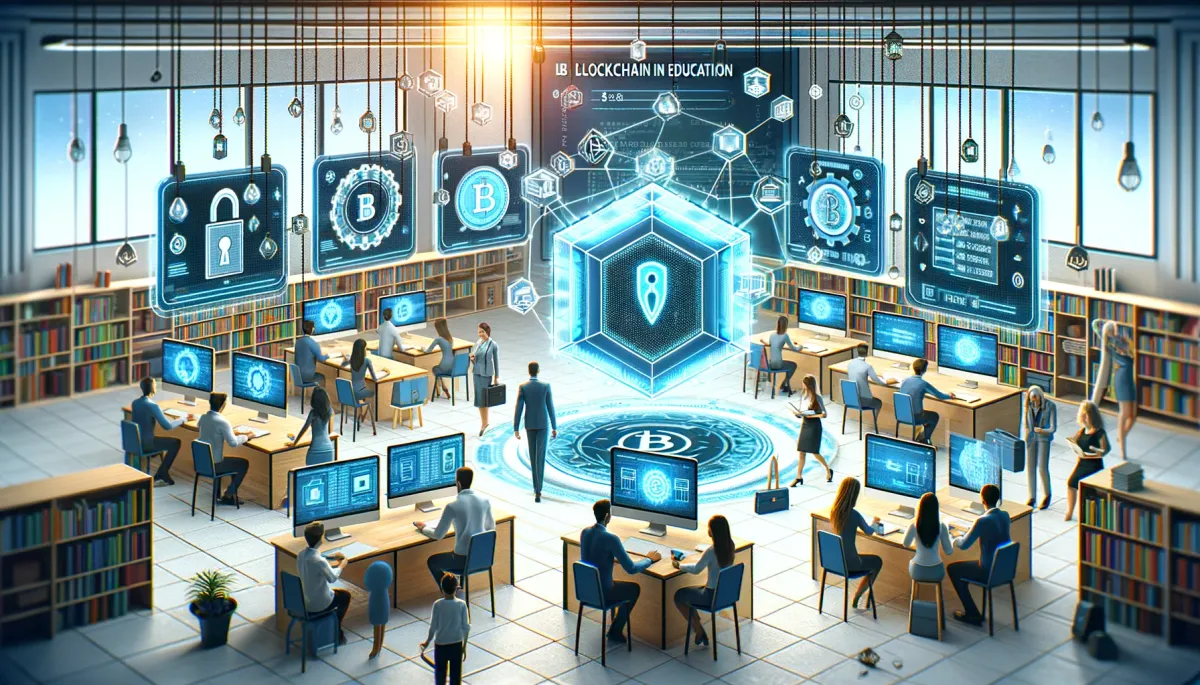
3. Why Blockchain in Education?
Addressing Issues of Transparency, Security, and Efficiency
Blockchain technology is not just a trend; it's a paradigm shift in how we think about data management. In education, this shift is particularly important. Traditional systems often suffer from a lack of transparency, security vulnerabilities, and inefficiencies in administrative processes. Blockchain addresses these issues head-on. For example, it can create an immutable record of educational data, including transcripts, degrees, and certifications, that is verifiable and tamper-proof (eLearning Industry).
Data-Backed Evidence Supporting Blockchain Adoption
According to a report by the Office of Educational Technology, blockchain technology can facilitate the secure, traceable, and verifiable exchange of educational data (Office of Educational Technology). This not only enhances the integrity of academic records but also simplifies administrative procedures, thereby saving time and resources.
The Philosophical Underpinning
The adoption of blockchain in education is not just a technological advancement but also a philosophical one. It aligns with the democratic ideals of transparency and equal access to information. As Thomas Jefferson once said, "An educated citizenry is a vital requisite for our survival as a free people." Blockchain can be the tool that ensures this educated citizenry has access to transparent and unalterable records.
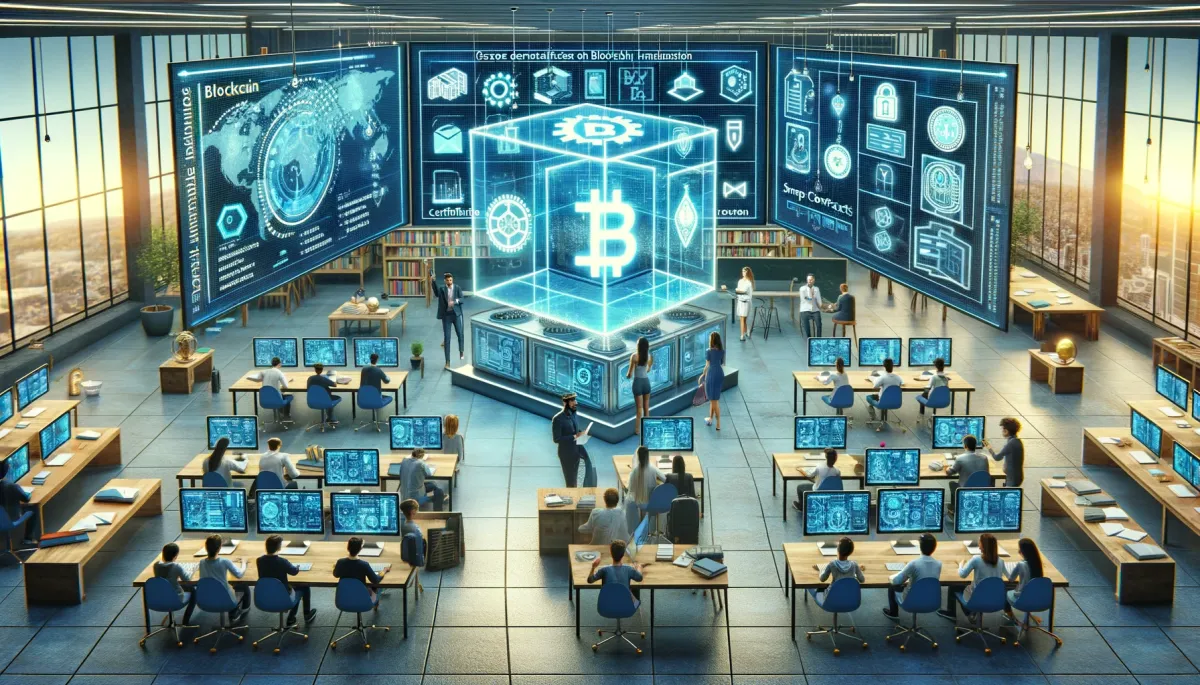
4. Key Features of Blockchain in Education
Decentralization
One of the cornerstone features of blockchain is its decentralized nature. Unlike traditional databases that are controlled by a single entity, blockchain distributes control across a network of participants. This decentralization is crucial for educational settings where multiple stakeholders, such as students, teachers, and administrators, need to interact with the data.
Transparency
Transparency is another key feature that makes blockchain a suitable choice for educational systems. All transactions are recorded on the blockchain and are visible to all participants in the network. This level of transparency can be particularly beneficial for tracking academic records and ensuring that credentials are legitimate.
Security
Blockchain employs advanced cryptographic techniques to secure data. Once a block is added to the blockchain, altering its content becomes computationally impractical. This ensures the security of academic records, making it nearly impossible for them to be tampered with.
Comparative Table: Key Features and Their Importance
| Key Feature | Importance in Education |
|---|---|
| Decentralization | Empowers multiple stakeholders by distributing control |
| Transparency | Ensures legitimacy of academic records |
| Security | Protects against data tampering and fraud |
By understanding these key features, educational institutions can make informed decisions about adopting blockchain technology. It's not just about jumping on the tech bandwagon; it's about choosing a technology that aligns with the core values and needs of the educational system.
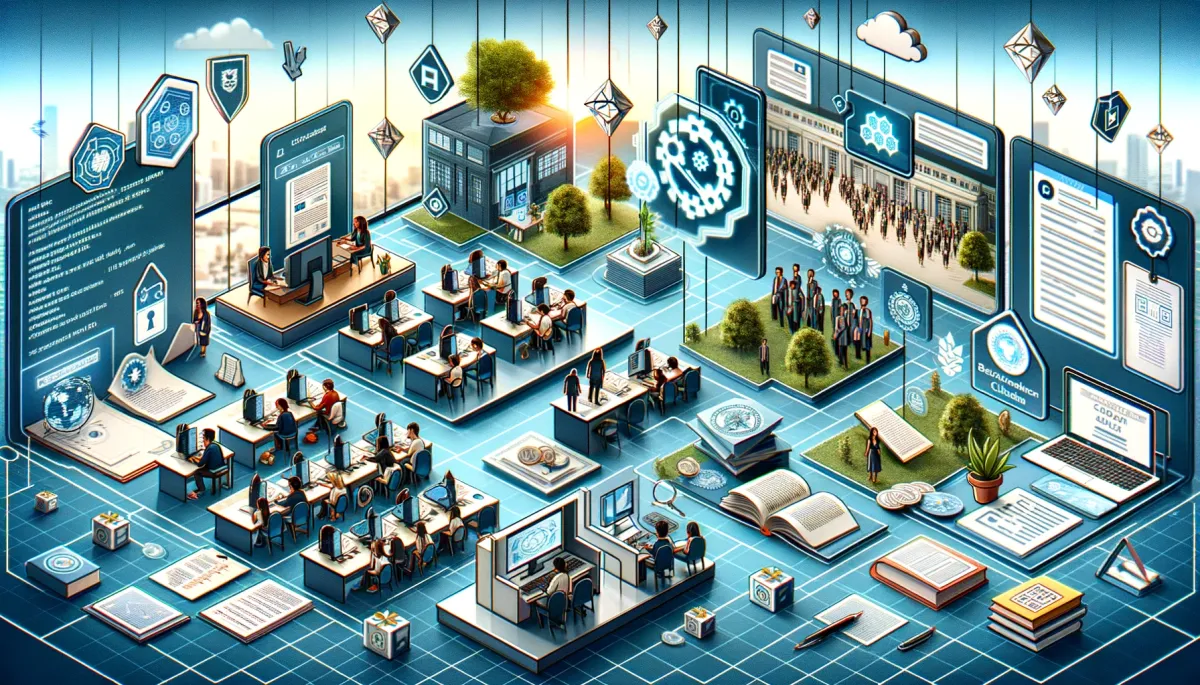
5. Real-world Applications
Academic Record Management
Blockchain technology is revolutionizing the way academic records are managed. Traditional systems often involve cumbersome paperwork and are susceptible to fraud. Blockchain, with its immutable ledger, offers a secure and efficient way to manage academic records. For example, a university could use blockchain to issue digital diplomas, which can be easily verified by employers or other educational institutions (Built In).
Teacher-Student Collaboration
Blockchain can also facilitate teacher-student collaboration by providing a secure and transparent platform for sharing resources and feedback. For instance, a blockchain-based platform could allow teachers to share course materials and receive student assignments, all while maintaining an immutable record of these transactions.
Utilizing Advanced Analytics in Online Tutoring
Blockchain can be integrated with advanced analytics to offer a more personalized and effective tutoring experience. By securely storing and analyzing student performance data, tutors can tailor their teaching methods to suit individual learning styles. This is a step towards the future of personalized education, and you can read more about it in our article on Utilizing Advanced Analytics in Online Tutoring.
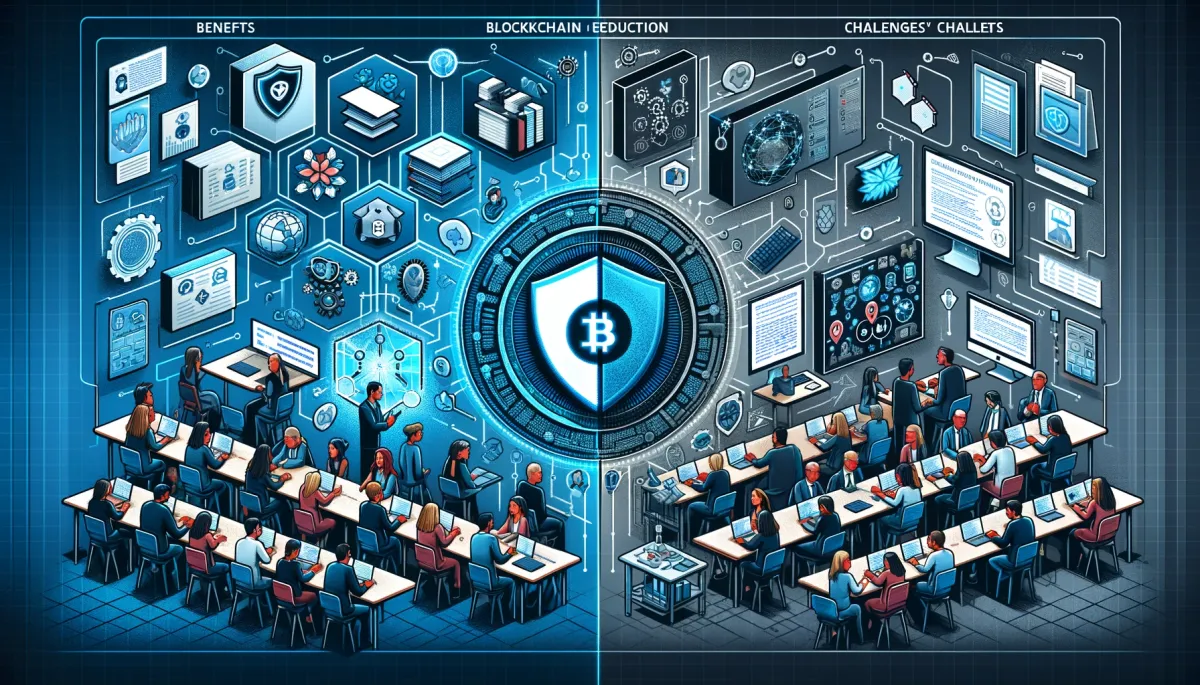
6. Benefits and Challenges
Pros and Cons
Blockchain technology offers numerous benefits for the educational sector, but it's not without its challenges.
Benefits
- Transparency: All transactions are recorded and can be viewed by all parties involved.
- Security: Advanced cryptographic techniques make it nearly impossible to tamper with data.
- Efficiency: Streamlines administrative processes, reducing time and costs.
Challenges
- Technical Complexity: Requires a certain level of technical expertise to implement and manage.
- Initial Costs: The initial setup can be expensive, although it promises long-term savings.
Addressing Common Misconceptions and Challenges
There are several misconceptions about blockchain technology, especially concerning its applicability in education. One common misconception is that blockchain is only useful for financial transactions. However, as we've seen, its applications in education are diverse and impactful. Another challenge is the lack of understanding and technical expertise among educational institutions, which can be overcome through proper training and awareness programs.
By weighing the benefits against the challenges, educational institutions can make an informed decision about whether blockchain technology is the right fit for them. It's not a one-size-fits-all solution, but for many, the advantages far outweigh the disadvantages.
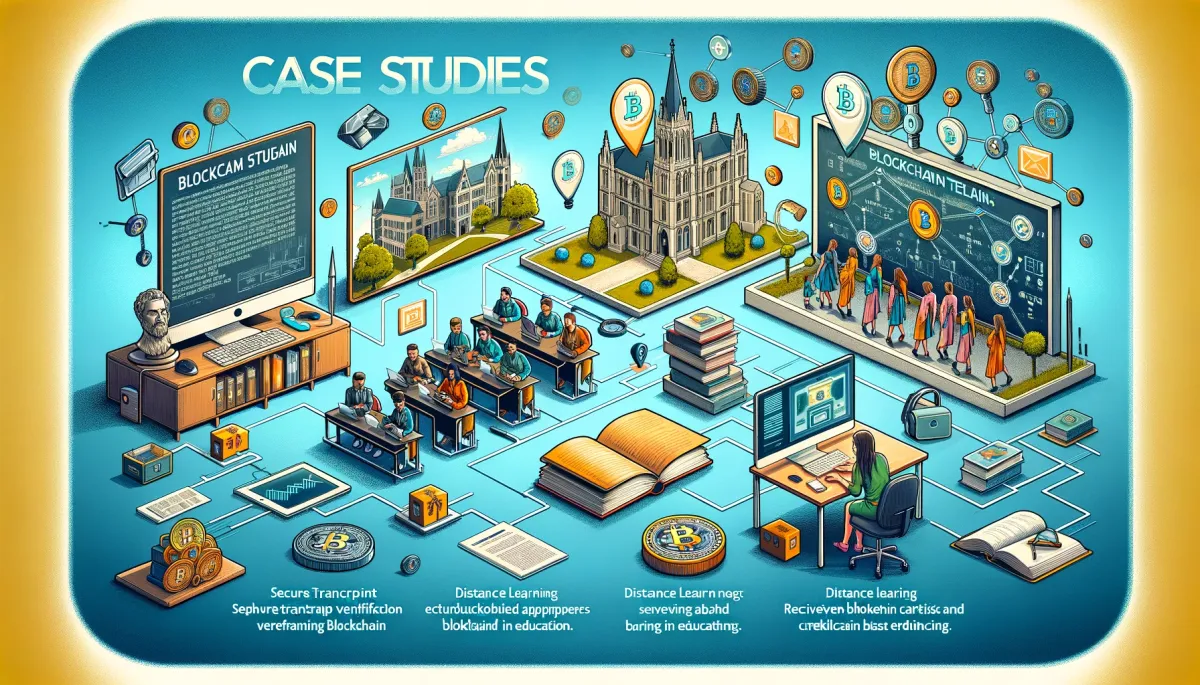
7. Case Studies
Universities Adopting Blockchain
Several universities worldwide are pioneering the use of blockchain technology in education. For instance, the Massachusetts Institute of Technology (MIT) has been issuing digital diplomas secured by blockchain technology. These digital diplomas are not only secure but also easily verifiable, thus reducing the risk of credential fraud (Built In).
Tutoring Platforms Leveraging Blockchain for Enhanced Services
Blockchain is not just confined to traditional educational institutions; it's also making waves in online tutoring platforms. For example, some platforms use blockchain to securely store and manage student performance data, thereby offering a more personalized learning experience. This aligns well with our own initiatives, as discussed in our article on AI-Assisted Tutoring Tools and Their Impact.

8. Future Prospects
AI-Assisted Blockchain Tools
The future of blockchain in education is incredibly promising, especially when combined with other cutting-edge technologies like Artificial Intelligence (AI). AI-assisted blockchain tools could offer predictive analytics, automated administrative tasks, and even AI-driven personalized learning plans. For a deeper dive into how AI is revolutionizing online tutoring, you can refer to our article on AI-Assisted Tutoring Tools and Their Impact.
Blockchain and Virtual Reality
Another exciting prospect is the integration of blockchain with Virtual Reality (VR) to create immersive educational experiences. Imagine a blockchain-secured VR classroom where students from around the world can interact in a secure and transparent environment. For more insights into how VR is changing the educational landscape, check out our article on Exploring Virtual Reality in Online Tutoring.
By looking at these future prospects, it's clear that blockchain technology has the potential to significantly impact education and online tutoring. It's not just a passing trend but a technological evolution that could redefine how we think about education in the digital age.
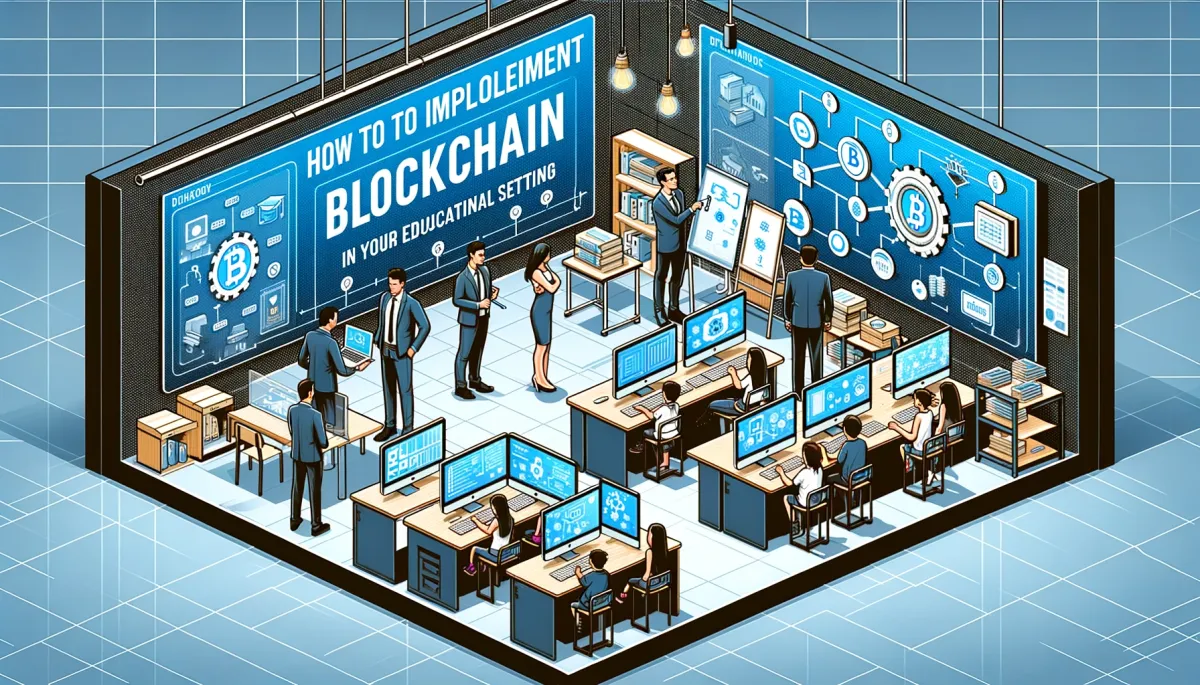
9. How to Implement Blockchain in Your Educational Setting
Step-by-Step Guide
Implementing blockchain in an educational setting is not a trivial task; it requires careful planning and execution. Here's a step-by-step guide to help you navigate this complex process:
- Define the Project Scope: Clearly outline what you aim to achieve with blockchain technology. This could range from academic record management to facilitating teacher-student collaboration.
- Project Planning: Develop a comprehensive plan that includes timelines, resources, and milestones.
- Choose the Right Enterprise Blockchain Framework: Different blockchain frameworks offer different features; choose one that aligns with your educational goals.
- Select the Right Tools and Platforms: There are various tools and platforms available for implementing blockchain. Make sure to choose those that are most suited for educational settings (DevTeam.Space).
Necessary Tools and Platforms
To implement blockchain, you'll need a range of tools and platforms, from blockchain frameworks to smart contract platforms. For a detailed guide on the tools and technologies that can make your online tutoring more effective, refer to our article on Tools and Technology for Effective Online Tutoring.

10. Conclusion
The integration of blockchain technology in education and tutoring is not merely a technological advancement; it's a transformative shift that has the potential to redefine the educational landscape. From ensuring transparency and security to facilitating efficient administrative processes, blockchain offers a plethora of benefits. However, it's crucial for educational institutions and tutors to weigh these advantages against the challenges and costs involved. By doing so, they can make an informed decision that aligns with their educational goals and values. This article aims to serve as a comprehensive guide, providing you with the insights and tools you need to navigate the complex yet rewarding world of blockchain in education.
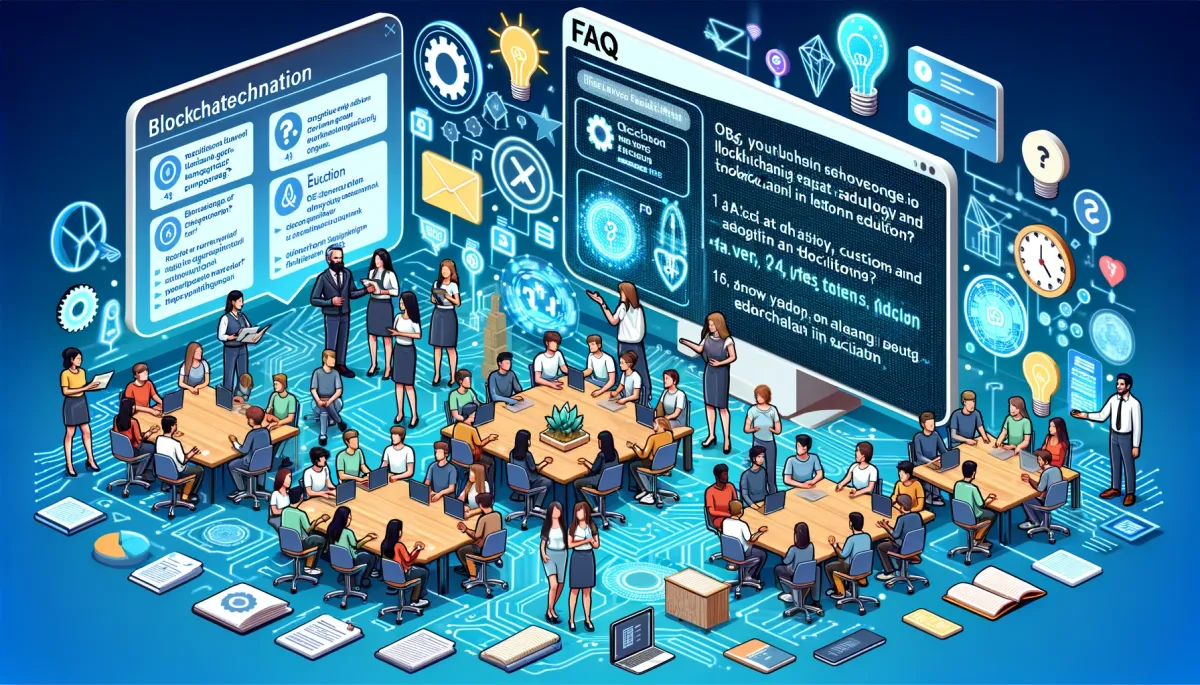
FAQs
1. What is Blockchain Technology in Education and Tutoring?
Blockchain technology in education refers to the use of a decentralized, transparent, and secure digital ledger to manage various aspects of the educational process, from academic records to administrative tasks.
2. How Can Blockchain Improve Education?
Blockchain can improve education by enhancing transparency, security, and efficiency. It can streamline administrative processes, secure academic records, and facilitate collaboration between teachers and students (Office of Educational Technology).
3. What Are the Challenges of Implementing Blockchain in Education?
The challenges include technical complexity, initial setup costs, and the need for stakeholder buy-in. However, these challenges can be mitigated through proper planning and training.
4. Is Blockchain Secure for Educational Purposes?
Yes, blockchain employs advanced cryptographic techniques to secure data, making it highly resistant to tampering (Education Week).
5. Are There Real-world Examples of Blockchain in Education?
Yes, several universities and online tutoring platforms are already leveraging blockchain technology to enhance their services (Built In).
By addressing these frequently asked questions, we hope to provide you with a well-rounded understanding of the potential and challenges of implementing blockchain technology in education and tutoring.
